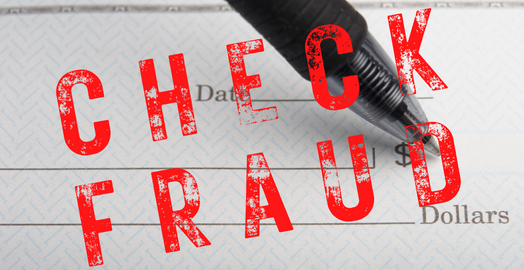Cautious Optimism: Sound Wealth Management 2023 Outlook

We are living in an era of buzz words. We’ve all heard them, some of us have maybe even said them, words like “new normal.” While the pandemic continues to get blamed for the “new normal,” the Jetsons predicted the 21st century to be full of things like telemedicine, video conferencing, robot vacuum cleaners and self-driving cars long before anyone ever heard of COVID-19 making it only a matter of time before what we reference as the “new normal” came to be anyway. If anything, the pandemic gave us a reason to integrate new and old technology into our daily lives in exciting ways.
The optimists in the room might say that despite the toll it took on people’s lives, and the world’s economy, the pandemic was a catalyst for advancement. And optimism is what your Sound Wealth Management advisory team would like to focus on as we enter 2023. We fully recognize that there are challenges to consider in the coming year, but we would be remiss if we didn’t also focus on the solid fundamentals and opportunities that we see before us.
I know we often prefer to get the bad news first, so let’s start with the challenges. The two major issues are geopolitical risks and domestic disturbances. We will touch on each of these separately.
The three main geopolitical risks putting pressure on the markets are:
- The war in Ukraine
- How long will it last?
- What will it take to be resolved?
- What will be the process for rebuilding?
- Escalating tensions between Israel and Iran
- What will happen with Iran’s nuclear program?
- How close does the Iranian regime come under the influence of Russia?
- What will be the ultimate impact of the internal strife of the regime that Iran is facing?
- Potential for Chinese invasion of Taiwan
- Will this come to fruition?
- What will be the costs?
- Can this be peacefully resolved or avoided?
The way we see it, the fundamental issue at play here is human emotion. Unfortunately, there is nothing simple about dealing with the emotions of iron-fisted world leaders in each of these cases. And when we add in the human response of the rest of the world to the shots that these individuals call, it becomes even messier. For example, if we look at the situation with Iran’s nuclear program, the previous treaty required the country to provide disclosure of their nuclear program to other world leaders. Now, in the absence of the treaty, the world is without disclosure. Furthermore, Iran has a track record for supplying weapons to Russia, who has already threatened Ukraine with the use of nuclear weapons. This causes a tremendous fear of the unknown response from the rest of the world as they speculate on the “what-ifs.”
While this hand has dealt us with quite a few wild cards, since the ultimate actions of dictatorial world leaders can be somewhat difficult to predict, research leads us to believe that we will begin to see the situation in Ukraine make a turn towards a resolution in 2023. This of course provides us with some peace of mind as well as some new investment opportunities as the rebuilding process begins.
Now, let’s focus our attention a little closer to home. The overarching domestic issues that we anticipate to impact markets in 2023 are:
- Inflation
- Interest rates
- Employment
- Corporate Profits
- Political Disruption
We’ll start with everyone’s favorite topic – inflation. The bad news is that inflation has been putting the squeeze on all our wallets in a way we have not seen in decades. The good news is that it seems that the worst of it is behind us with inflation having peaked just shy of 9% in June and sitting currently at 7.1%. Today, the Fed remains focused on two major priorities: employment and fighting inflation. With under 5% unemployment considered full employment, the US remains at full employment and fighting inflation remains the top priority for the Fed. Unfortunately, with only one arrow in their quiver, this likely means that the Fed will continue to raise rate to near 5.25%-5.5% with a goal of bringing inflation down to nearly 4% by year end prior to beginning rate reductions in 2024.
Rising interest rates pose an interesting conundrum. On one hand, this provides an opportunity for fixed income investors to finally begin receiving reasonable returns with minimal risk to principal by seeking investments in categories like treasuries, money markets and investment grade corporates. On the other hand, consumers seeking financing for large purchases will pay considerably larger amounts for the money that they borrow, putting things like new cars and homeownership out of reach for some buyers. The reign of “free money” has come to an end as we make a return to an economic normalcy that has not been seen since prior to the financial crisis of 2008.
On the employment front, jobs have continued to flood the market pushing unemployment numbers to pre-pandemic lows. At the same time, wage growth has grown at a solid 4.6% year over year. However, this is not necessarily cause for celebration. When we factor the 7.1% inflation rate, this 4.6% wage growth ultimately translates into a 2.5% wage reduction for American workers. Despite corporations’ best efforts to incentivize workers to join the workforce through efforts such as higher wages and increases to employee benefits plans, there remains a dramatic worker shortage. This can be attributed primarily to population trends. The post-World War II era saw the largest population boom in US history which was coupled with a large entry of women into the workforce that had not been seen in previous generations. This combination gave us an unprecedented number of workers to supply goods and services. However, this generation is beginning to retire out of the workforce, and the generations that have followed have experienced birth declines which means that the American workforce cannot fully replace those workers. Of course, demand for goods and services continues to grow and with less and less people to provide them, we are seeing the beginning of a long-term issue that countries around the world will need to address.
The next domestic issue is corporate profits. As discussed above, corporations have found themselves in a predicament of needing to find a way to continue to deliver their products and services with fewer workers. In some cases, this has turned into investing in new machines and paying overtime wages, but the fundamental principle remains that companies continue to sell more while paying out less. Add to this the concept of the “new normal” that we mentioned above, and many companies have been able to further reduce expenses by giving up leases on large office spaces while they allow their employees the flexibility to work from home, leading to even greater corporate profits. Despite the volatility that we have all felt in our investment accounts, the companies that we hold in our portfolios are showing strong earnings which build a solid foundation as we look towards the future and beyond some of the outside factors that contribute to market unrest. To further stoke the corporate fire, we are beginning to see some resolution to the supply chain crisis that we have experienced over the last couple of years. Major manufacturers are looking outside of China for their predominant labor forces and centers of industry. This has led to the construction of three major chip manufacturing plants in the US.
It is no secret that our elected officials in Washington D.C. have become much like the Hatfields and the McCoys in recent years with both Republicans and Democrats taking a position of “I’m going to disagree just so I don’t agree with them” without much thought to the ramifications of what this means for the country. Because of this attitude, we find ourselves with looming threats of default on sovereign debt. While the value of the dollar remains at a historic high when compared to many foreign currencies, a failure to raise the debt ceiling will force a default that could potentially devalue the dollar to pennies. While the likelihood of this happening remains slim, the question remains: at what point will the Hatfields and McCoys be able to put aside their differences long enough to save the US monetary system as we know it?
As mentioned above, though, let’s not forget to see good. First, the continued rate hikes provide opportunities for reasonable returns in the fixed income investments including the typical “safe haven” ports such as treasuries and money markets as opposed to the negative returns that we felt across fixed income in 2022. Additionally, corporate earnings continue to be strong as companies adjust to doing business in this new reality. Supply chain issues are beginning to sort themselves out, particularly the chip shortage, with the construction of three new chip manufacturing plants in the US. Also, recent legislation will begin to bear fruit throughout 2023 and 2024 with infrastructure projects such as new roads and bridges, and additional opportunities will begin to present themselves as we start to see geopolitical issues find their way to eventual resolutions. Finally, never underestimate the resiliency of American businesses and consumers and the positive impact they have on the United States economy.
But, perhaps most importantly for you, our clients, the Sound Wealth Management advisory team is tuned in to all of it, keeping a close watch for market signals as we work to provide “sound” guidance to help you in working toward your financial goals. We remain optimistic about the future as we enter this new year, and “new normal” together.
The opinions voiced in this material are for general information only and are not intended to provide specific advice or recommendations for any individual. All performance referenced is historical and is no guarantee of future results.
The economic forecasts set forth in this material may not develop as predicted and there can be no guarantee that strategies promoted will be successful.










